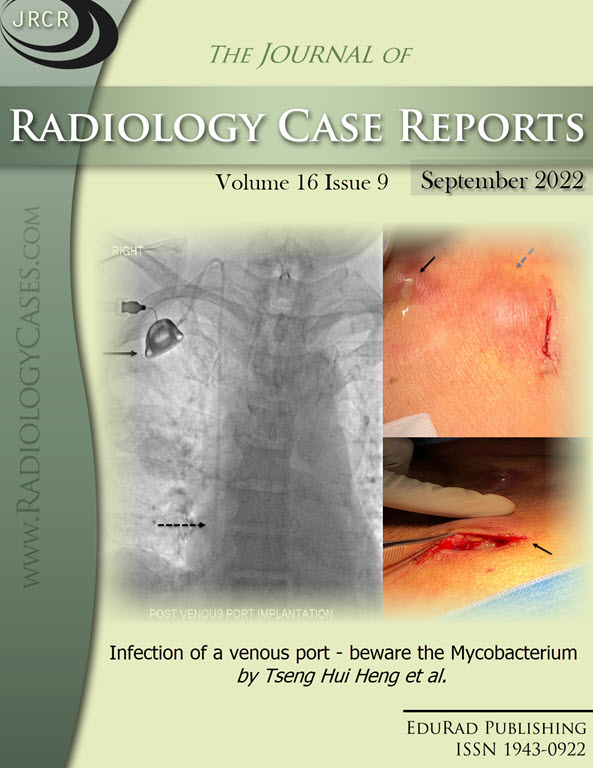投稿信息
稿件收录要求
Focus and Scope
This journal is dedicated to provide open-access, high-quality, peer-reviewed Radiology case reports and educational review articles. We encourage everybody to submit interesting Radiology cases or Radiology teaching related articles. Medical/surgical articles with emphasis on diagnostic imaging are also welcome. Blinded review of cases allows a fair and unbiased publication of Radiology case reports.
The "Journal of Radiology Case Reports" is a PubMed/Medline indexed new kind of journals for Radiology case reports. The peer review and editorial process conforms to international standards of peer reviewed scientific journals. However there are significant differences: This journal is dedicated solely to Radiology case reports. Case reports are usually "neglected" by large or traditional journals, mainly due to competition with "higher value" articles (review, original research etc.) for valuable space in the hardcopy version of the journal. As a consequence, it becomes increasingly difficult to publish interesting casuistics in a peer-reviewed environment. This was one reason why this online journal was born - to give the opportunity to publish Radiology case reports.
Interactivity is unique and allows to view the cases as seen on workstations - with scroll functions and ability to "window and level", magnify and other features.
Traditionally, case reports provide only selected images which demonstrate the pathology (or only pertinent findings). This has not only a limited learning value, because the user only receives selected information and cannot "find out" the answer him/herself. But, what is more important is, that this kind of provided information does not resemble the "real life" at the radiologist's workstation. When we open a study, the pathology does not jump immediately in our eyes on the first image. We have to scroll through the stack of images and have to find the pathology ourselves. Furthermore, scolling through the stack of images helps to obtain an overview of the entire environment.
Review process is blinded and exceptional by providing peer-review by at least 3 reviewers. The review process can take up to 6-12 weeks, depending on the amount of new submissions, which has increased significantly in the last years.
As in traditional journals, the published articles are fully citable in this journal. Each article receives a DOI (Digital Object Identifier) - these days every modern journal assigns its articles a DOI for easier referencing. The JRCR is also Medline/PubMed indexed. The articles are available in multiple formats (Abstract, HTML, PDF, Interactive)
What kind of articles are suited for this journal?
Any kind of medical imaging related articles (case report, case series, review, original research, tutorial) are welcomed, which:
- report and explain unusual or unexpected findings.
- promote knowledge about known and new disease processes.
- expand or refresh knowledge about anatomy in imaging.
- help, better understand technical aspects of medical imaging.
- new scientific data on a smaller scale (studies on small populations, few patients) which could e.g. help, contributing to larger meta-analysis studies.
- other uptodate knowledge in medical imaging.




